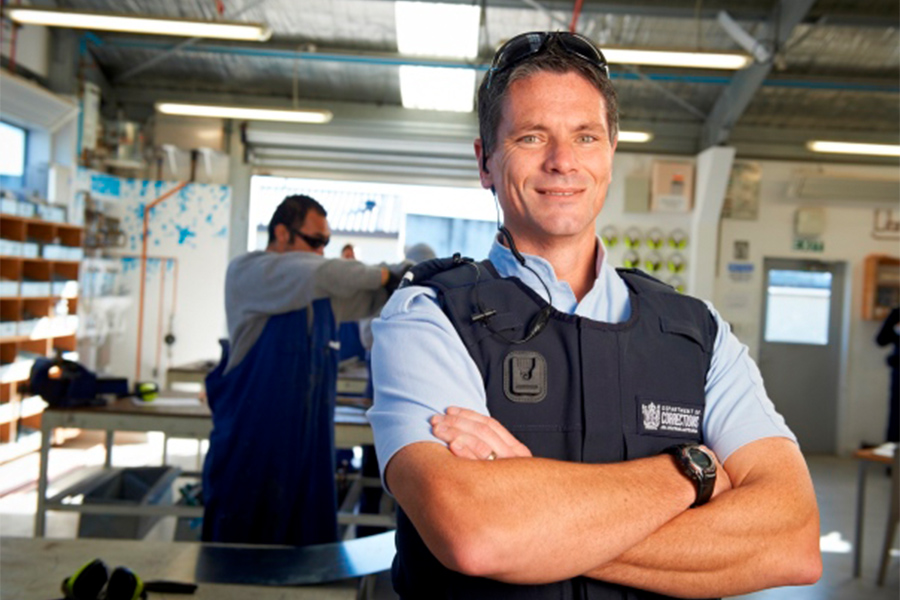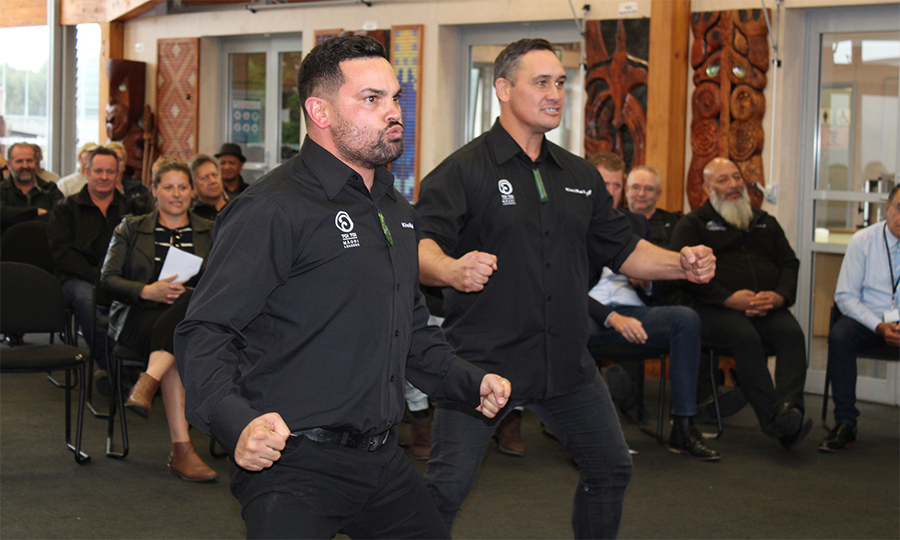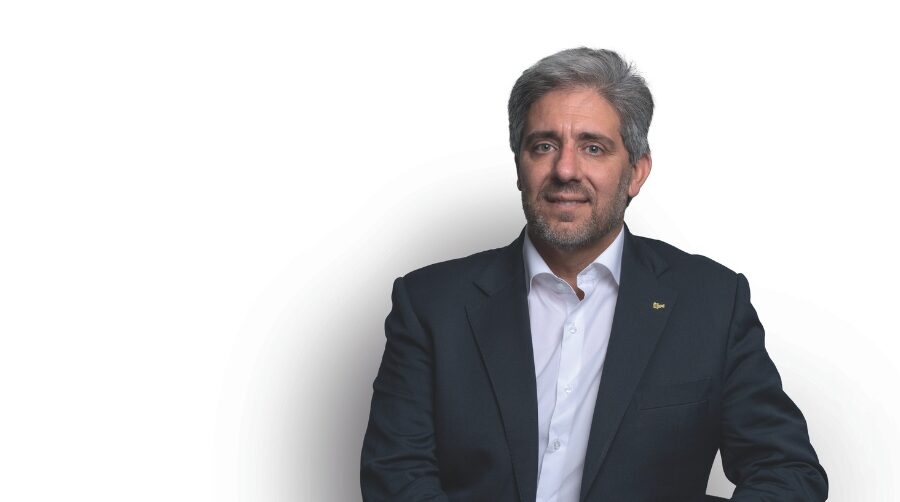Interview
Jeremy Lightfoot
Chief Executive, Ara Poutama Aotearoa – Department of Corrections, New Zealand
Our interviewee leads a workforce of nearly 9,000 people who manage around 10,000 people in prison and 30,000 people serving sentences or orders in the community. He played a critical leadership role in developing Hōkai Rangi, a five-year strategy setting out the agency’s commitment to eliminating the over-representation of Māori in the criminal justice system. In this interview, he highlights the priorities towards safer environments and communities by placing wellbeing at the heart of the Department’s work.
JT: New Zealand experiences a significant over-representation of Māori citizens in the corrections system. By the end of 2018, the percentage of Māori people in the prison population amounted to 52% while they represented around 15% of national population. (Source:Department of Corrections).
What are the main challenges caused by this reality and what are the Department of Corrections main priorities and goals in this regard?
JL: Several factors impact the prison population and it’s important that we work closely with the wider justice system and other agency and NGO partners to reduce it.
A big focus has been offering safer alternative community options that enable the Judiciary to consider when sentencing.
One of these is the Bail Support Services initiative which has been piloted since 2018. The service supports people remanded in custody or at risk of being remanded to apply for bail through robust and timely applications.
If bail or electronically monitored bail is granted, the service supports people to ensure bail is sustained. This includes helping people understand their bail conditions, connecting them to services to address unmet social needs, and providing guidance to help them on a trajectory out of the justice system.
We deliver the service in collaboration with our justice sector partners, including Police, Courts, the Ministry of Social Development, and the Ministry of Justice.
It has achieved positive results such as reducing the time taken for bail to be granted, a reduced number of people being returned to custody due to breach charges, and a higher proportion of community-based sentences (compared with those not supported by the service).
The service is now being implemented across New Zealand alongside iwi (the people), Māori social service providers, and justice sector stakeholders on a district-by-district basis. In addition, we’ve been looking at the programmes and interventions that make the most significant difference to people not coming back to prison. In 2017, the Waitangi Tribunal released Tū Mai Te Rangi: Reporting on the Crown and Disproportionate Reoffending Rates.
The report drew attention to our success in reducing re-offending overall. Still, it concluded we were in breach of the treaty principles of active protection and equity for our lack of strategic focus on Māori.
In response, we launched Hōkai Rangi in August 2019, which outlines our commitment to improve outcomes with, and for, Māori. It was developed with Māori and incorporates a Te Ao Māori worldview.
At the heart of Hōkai Rangi is the concept of wellbeing for all people, including our staff, people serving sentences and orders, their family, victims, and our communities.
We focus our work on six outcome areas: partnership and leadership; humanising and healing; whānau (family); incorporating a Te Ao Māori worldview; whakapapa (genealogy); and setting the foundations for participation.
These outcomes will help us deliver on our strategic goals of improving public safety, reducing re-offending, and working alongside our partners to reduce the over-representation of Māori in the corrections system.
A big focus has been offering safer alternative community options that enable the Judiciary to consider when sentencing.

JT: The Department of Corrections strategic plan 2019-2024 foresees a true systemic change.
What do you highlight about it and what results have already been achieved?
JL: We are increasingly partnering with others and doing so in a meaningful way. We can’t deliver Hōkai Rangi alone, and we need to recognise that we don’t have all the answers ourselves. We’ve achieved some excellent progress over the past couple of years.
Hikitia (formerly the Waikeria Mental Health and Addiction Service) and the Māori Pathways Programme are fantastic examples of partnering.We are testing new ways of partnering with Māori at these pilot sites. The lessons from these will inform changes to how we work elsewhere.
Some gains have been made to reduce the prison population, and we’ve seen encouraging statistics. We’ve safely reduced the prison population from the March 2018 peak of 10,820 to 7,989 today (9 February 2022).
In March 2018, the rate of imprisonment for New Zealand was 218 per 100,000 whreas on 31 December 2021 it was 148 per 100,000 (a 32% reduction). For Māori, the imprisonment rate in March 2018 was 657 per 100,000. On 31 December 2021, it was 459 per 100,000 (a 30% reduction).
Reconviction and reimprisonment rates are improving. The proportion of people released from prison who are reconvicted within 12 months has decreased from 42% to 39% between 2014/15 and 2019/20, while the proportion of people reimprisoned within 12 months of release has decreased from 28% to 24%. Reconviction and reimprisonment rates are also improving for Māori.
From 2014/15 to 2018/19 the 12-month reimprisonment rates for Māori have declined from 30% to 27%, while 12-month reconviction rates have decreased from 46% to 43%.
The next big challenge is understanding what the whole system can do to have more of an equity focus.
I see tremendous opportunities and support for a collective justice sector approach. I’ve never seen such a unified pursuit of that goal. We need to shift our mode to have collective impact.
We launched Hōkai Rangi in August 2019, which outlines our commitment to improve outcomes with, and for, Māori.

What is your approach to staff training and development, and what importance does it have in the Department’s ongoing strategy?
JL: Wellbeing is at the heart of Hōkai Rangi. “Kotahi anō te kaupapa: ko te oranga o te iwi” – There is only one purpose to our work: the wellness and wellbeing of people.For me, there are three groups of people – our staff, the people we manage and their whānau (family), and the community.
If our staff are not well, we can’t make a positive difference for those we manage and care for. So, the development of our workforce is one of my highest priorities and is critical to us delivering 'Hōkai Rangi'.
And that’s why we are investing in long-term workforce capability uplift through ongoing training and skills development. It is essential to support our workforce to do some of the country’s hardest jobs.
There is not much public recognition for the incredibly challenging environments our people have to grapple with every day. We need to have the right supports in place, by ensuring that our staff, particularly those at the frontline, have the skills and capability they need to do their jobs.
We’ve done a lot of foundational work to put in place these supports, but we have a lot more to do over the next few years. We’re doing work to keep our frontline staff safe through the Violence and Aggression Joint Action Plan. Developed with unions last year, this plan sets out a range of actions to prevent and reduce the number of assaults on prison staff and is focused on five key areas: Looking at our internal disciplinary process to ensure prisoners are held to account for their actions; Delivering appropriate and engaging training for staff; Considering our current range of personal protective equipment (PPE) for staff to ensure it is fit for purpose; Ensuring that staff sites are appropriately staffed and freeing up time from transactional tasks to enable staff to build rapport with people in prison; Ensuring that staff wellbeing is appropriately supported, including their physical and mental health.

JT: A news piece on the Department’s website tells us that “Ara Poutama Aotearoa – The Department of Corrections is developing a new prison with a dedicated mental health and addiction service at Waikeria Prison”.
What can you tell us about this new infrastructure (Hikitia) and other modernisation projects that are underway?
JL: Hikitia (formerly Waikeria Mental Health and Addiction Service) is being developed in our Central Region prisons for men in custody who have complex mental health and addiction needs. The name was gifted to us by our Māori partners and means to “lift up, take away the troubles that overwhelm a person”.
The 100-bed unit (Te Wai o Pure) located at Waikeria Prison will be central to the service, with outreach services to the other two Central Region prisons (Spring Hill Corrections Facility and Tongariro Prison).
Te Wai o Pure and the wider Hikitia service are being developed as part of the new Waikeria Prison build and will be available from 2023. We’re expecting approximately 2,000 men will benefit from the service annually.
Hikitia is a great example of our future direction. Moreover, we are making a significant investment to ensure our staff have the specialist skills and capability they need. We will also showcase the benefit of technology and access to devices, with appropriate security controls in place.
The rebuild at Waikeria will be the first prison to benefit from a technologically enabled environment.
It won’t be the last – we will learn from it and then roll out the solutions elsewhere.
We recently tested the devices that will be used at Waikeria Prison with women participating in a very successful pilot at Christchurch Women’s Prison. It was really heartening to read their feedback which reports feelings of humanisation, dignity and independence.
Given the physical structure of the prison environment, it is difficult to retrofit new technology infrastructure. But we’re currently piloting a wireless service for our staff at Christchurch Women’s Prison where we’ve tested a design that enables us to use wireless devices.
This design is letting us work out what might be needed to do this nationally. Officers are using robust devices (which are drop proof and can be worn inside their stab resistant body armour) which they were involved in choosing.
These devices are letting us start to automate manual tasks. We’re involving our staff in this too, and asked them what tasks they wanted automated first (they chose doing the muster).
Using the devices is freeing up time for more meaningful work, including more engagement with those we manage. There is a lot of potential for their use, including for online training, and telehealth services.

JT: The number of people serving community sentences and orders in New Zealand is about three times the number of incarcerated offenders.
What has been the evolution of alternative sentences in New Zealand and how does the Department of Corrections contribute to community corrections?
JL: New Zealand has relatively high volumes of people serving community sentences compared to other jurisdictions. In 2007, home detention was introduced as a sentence in its own right and new sentences of community detention and intensive supervision were created.
Since then, we’ve seen general trends of increasing supervision and intensive supervision use and a decline in community work sentences.
The use of community detention and home detention sentences have remained relatively steady since their introduction. Our Community Corrections workforce plays a vital role in community safety.
Corrections ensures that people comply with their sentences and orders and provides rehabilitation programmes, education and job training that will help people to turn their lives around and break the cycle of re-offending.
Electronic monitoring is an important tool to manage people safely in the community. In November 2021, we signed a new contract with a technology company to deliver our electronic monitoring solution.
The solution enables significantly better electronic monitoring coverage throughout the country and provides very accurate monitoring of conditions and orders.
It makes community based sentences and orders safe and viable alternatives to imprisonment for many more people that our Department manages. Morover, it enables people to participate more normally in society while serving a sentence or order.
To what extent did the COVID-19 pandemic impact the Department of Corrections? What opportunities and challenges has it brought to the organisation?
JL: As an organisation, our approach to the pandemic has been underpinned by three priorities: 1) The safety and wellbeing of people; 2) The needs of those in our care and their families – recognising that the restrictions we put in place, which included a lack of physical contact with their families, would significantly impact on them and their wellbeing; and, 3) Delivering critical operational activities proportionate to risk.
Our focus has been making sure we could provide our services as safely as possible and had the necessary measures in place. We redesigned all our operational activities based on risk. We reviewed the high-level activities our 10,000 staff undertook and mapped them to the country’s Alert Levels.
So, for example, at Alert Level 4 (the highest alert level), all our Community Corrections sites were physically shut down. We still had to manage 30,000 individuals serving community sentences and orders, so we had to quickly identify innovative changes, including the greater use of technology.
Likewise, for our prisons, we needed to continue to manage the 8,000 or so individuals in our custody safely and with a focus on their wellbeing and needs, along with the safety of our staff.
We introduced a range of measures to keep the environment safe, namely a 14-day separation for newly arrived people in prison from the rest of the prison population; thermal imaging scanners and health screening for all those entering our prisons, including staff and visitors; social distancing; PPE; vaccinations; and proximity cards for ease of contact tracing.
The measures we put in place have kept people in our prisons safe. We had our first case in April 2020 and we were then COVID-19 free for almost 16 months. In total, as at 17 January 2022, we have had 76 cases at our prisons and there has been no transmission of the virus within our prisons.
Earlier this year, our prison-based staff were one of the first groups to become eligible for vaccination. We have strongly encouraged and supported our staff and those in our care to get vaccinated.
While it is now mandatory for many of our staff to be vaccinated, the vast majority were vaccinated even prior to this. We have pulled out all the stops to ensure our staff – and the people in our prisons – feel safe and supported in getting their vaccination.
Initiatives include promoting word of mouth discussions with influential leaders in our prisons and culturally-targeted educational forums, enabling our prison-based staff to be vaccinated at their prison health centre, and drive-through vaccination clinics.
We are now working through the process of having vaccination mandatory for all staff working in Community Corrections to also be fully vaccinated against COVID-19 by 28 April 2022.
There have been some positives that have come out of our response to the pandemic. A highlight has been how teams have supported their colleagues.
Mental wellbeing is crucial, and we’ve all become more aware of this during the pandemic. Staying connected and supporting each other has been key to getting us through a difficult and uncertain time.
Another positive has been the work we put into keeping people in prisons connected to their loved ones. A vital part of this was introducing video calling. This helped people stay connected despite visits being suspended during lockdown periods.
Jeremy Lightfoot
Chief Executive, Ara Poutama Aotearoa - Department of Corrections, New Zealand
Jeremy Lightfoot was appointed as Chief Executive in February 2020. He has held numerous roles since joining Corrections in 2010 – including Deputy Chief Executive, General Manager of Finance, Technology and Commercial, and National Commissioner. He was also the Public Private Partnership (PPP) Director for the Wiri Prison Project (now Auckland South Corrections Facility). Lightfoot has extensive public sector, commercial and contract management experience both in New Zealand and the United Kingdom.


